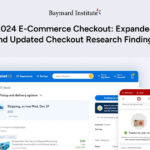Buy now, pay later (BNPL) firms are putting their cards on the table – literally.
In recent weeks, tapping into the continued rise of debit spending, some of the bigger names in the BNPL space have begun issuing their own debit cards.
Against that backdrop, Klarna said this week that it has introduced its Klarna Card in the U.S. The card, issued in a physical plastic format, lets users make interest-free payments across four installments. The card can be used in-store or online through the Klarna app. The company also said the card can be used with the “Pays” (Apple Pay and Google Pay, that is).
Read more: Klarna Introduces Pay Now and Klarna Card in US
In the announcement detailing the card (and a concurrent launch of Pay Now, a service that lets users pay immediately and in full), Klarna CEO Sebastian Siemiatkowski said the card offers a way to sidestep the fees and interest rate charges associated with traditional credit.
Notably, the card is also connected to Klarna’s loyalty program, Vibe, which rewards timely payments over the aforementioned installments with deals and discounts.
On this latter point, the reward function is an important strategic feature, offering perks that might more commonly be found with traditional credit offerings. Rewards can keep a card top of mind for a consumer – and top of wallet, too.
Separately, Affirm late last month announced a waitlist for its own card, Affirm Debit+. That card, geared toward purchases between $100 to $1,000, also allows for transactions to be paid over time in four installments.
More details: Affirm to Release Debit Card With Installment Payment Functionality
Afterpay already has its Pay Now debit product available. Other payment firms that are looking to move more broadly into the BNPL space – PayPal comes to mind, having bought Bill Me Later earlier in the millennium – already have debit card functionality in place (PayPal’s Cash Card is a debit card linked to its balance accounts).
By bringing these decoupled debit offerings directly to market, the BNPL firms are giving users an additional way – and with rewards, the incentive – to keep spending within the ecosystems they are in the midst of creating.
It is also a strategy that seemingly seeks to head the major payment networks and traditional financial institutions (FIs) off at the pass as they explore their own BNPL offerings. Companies such as Capital One have stated that they are testing BNPL. During an investor presentation earlier this year, Capital One CEO Richard Fairbank said that tests were underway with a “select set of merchants.” Mastercard, in another example, announced Mastercard Installments in the fall.
The Rise of Debit
The rise of debit is evident in the payment giants’ recent earnings results. Visa’s latest report showed that debit card issuance outpaced credit, growing at respective 9% and 2% rates, while debit payment growth was up 15%. Mastercard reported debit growth of 9% in the quarter – and notably, that line of business is 131% of what it was pre-pandemic.
Also see: Visa X-Border Payments Volumes Surge 38%
As the jockeying for BNPL business cuts across any number of providers – incumbent juggernauts and digital-only upstarts alike – the greenfield opportunity is there. As PYMNTS research has shown, 29 million U.S. consumers have used BNPL at least once in the past year.
Looking ahead, in a nod toward ecosystems taking shape, Sezzle CEO Charlie Youakim told Karen Webster in a recent interview that five years from now, BNPL providers may look a lot more like “tech-enabled” digital banks. He predicted that over time, merchants will partner with BNPL providers to offer store credit cards that feature the same types of rewards and installment plans people look for with BNPL.
You may also like: Buy Now, Pay Later Providers See Future in Becoming ‘Tech-Enabled’ Digital Banks







